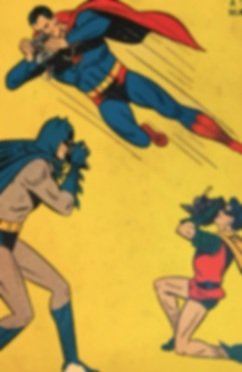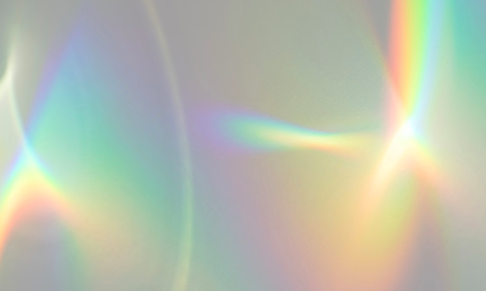
Existing is a Political Act
Sonya Ballantyne
Growing up on a Rez in Northern Manitoba, I often wondered what was so offensive about me. At 3, I had a white man tell me I was never going to amount to anything because I was Indian and a girl. At 5, I had a white man grab me by the arm because he thought I was stealing a candy bar. At 11, I was blamed for the negative attention I was receiving from (older) white men for wearing oversized men’s t-shirts after I went from a flat chest to a D cup in three days.
Even now, walking into a Shoppers’ Drug Mart while wearing a hoodie gets me a security entourage within moments. Stuff I’ve created is dissected in university classrooms where students try to find “the real reason” I put a police officer in my comic book movie.
I read somewhere that the existence of an Indigenous person is a political act. I think about that a lot. I also think about this quote from the film director Taika Waititi where he said that if an Indigenous person created a story, regardless of its content, it is an Indigenous story.
I didn’t consider myself an activist until I became a punk as a teenager. And I became a punk as the result of my love for the band U2. Being the only non-white fan of U2 under 50 in Northern Manitoba was the most punk rock thing I could do. I learned about organizations like Greenpeace and Amnesty International from U2 and began to develop a social conscience. It took a while until I realized that the issues I was writing letters to foreign governments about, such as access to clean water, were issues that were impacting my own people. I began to wonder why no one was making a big deal about people like me living in Canada in conditions akin to a war-torn country in Africa. My love of U2 began my activism and answering for myself the questions I couldn’t get answered.
You don’t notice things are wrong if it’s all you’ve ever known. Living on a Rez was just something I did. My Grandma’s house not having access to water was just something we dealt with. White people calling me dirty because of where I came from was annoying, but it happened to everyone where I grew up. It took a while until I realized that not everyone went to the bathroom in a pail like I did at my Grandma’s house.
Anger has always been the emotion at the forefront of my mind. As a child, I got angry when someone would treat me bad for being Native. There was a place called “Hydro” in my hometown and I was always angry at it. It was where majority of the rich people lived. The roads were paved, the houses had basements, and every house had a fridge with an ice dispenser. I saw my basement-less house on a gravel road with a fridge that just had a door on its front and was angry about that.
I also got angry about being treated like I was nothing because I was a girl. My intelligence in school was downplayed. I was told I was weird because I liked reading books and playing floor hockey. I remember I became angry when someone said I wasn’t really Native because I liked science.
As I grew older, I saw how anger was turned inward in the people around me. People who were older than me and had the same anger at the way we were treated would turn that anger on themselves and become addicted to alcohol or self-harm. I was scared of that happening to me, so I made sure to keep the anger inside of me focused on my biggest goals: finding a way off the Rez and becoming a writer.
I think the Rez is awesome, and I miss it when I am not there. Yet ever since I could remember, I was dreaming about leaving. I wanted to visit exotic places like Australia, Beijing, and Calgary (I was a huge Bret Hart fan). I got my chance to leave when I attended university four hours away from home. It was my first time living away from home and my first time living without being surrounded by other Cree people.
At university, when people didn’t know immediately that I was Native or mistook me for something other than Indigenous, I wouldn’t correct them. During my first months at school, I was the only Native person in majority of my classes, and one of only two Native people in my dorm. I heard how people talked about homeless Indigenous people and hated the idea of being put in the same camp by people I thought were my friends.
At the same time, I was also trying to make a go at writing. I always wanted to be a writer but my stories about Cree girls going on adventures in space or becoming superheroes didn’t fit my narrative of what “successful” writing was. I wanted to be like Stephen King and Clive Barker. I thought if I wrote like that, I would be successful. Despite writing coming so easy to me, once I tried to write like Stephen King, I couldn’t write a thing.
When I was trying to be something else, I was never happy.
It wasn’t until I was older, after leaving law school, that I finally decided to be me. I went to film school and started writing--not like Clive Barker, but like me. All my stories were about Indigenous girls trying to heal themselves or heal the ones they loved. The genre would always change but the message was always the same. The stories came so easy to me again. I began to become successful once I started telling the stories I wanted to tell and not the ones I thought I had to.
I wrote because all I wanted as a kid was a Native hero: a hero that looked like me, who was from where I was, and who did amazing things. That hero still hadn’t shown up when I was a grown up and so I realized I would have to do it. If only for me. Luckily a lot of people wanted to see these sorts of girls.
It did not begin as a crusade. I didn’t intend to scream for Indigenous representation. I just wanted a cool funny story about an awesome Cree girl, and I couldn’t wait for someone else to do it when I could do it myself. The creation became a political act because my existence is a political act.
I’m still a punk. But an optimistic one. The girls I create see the best in everything despite the bad things they have faced because those are the girls I wanted to see. When I first started writing professionally, I thought the only Cree girls I would write about would be my own creations. I’ve been blessed to write about two Cree girls who were not my creation for two children’s television shows.
Optimism and punk don’t seem to mix well but I learned it from being a U2 fan. The hardest thing in the world is to be hopeful and earnest, in spite of everything. Creating these hopeful little Indigenous girls that will be seen by millions of other kids, that is a political act.

Sonya Ballantyne is a Swampy Cree writer, filmmaker, and speaker from Winnipeg, Manitoba. Her work focuses on contemporary and futuristic portrayals of Indigenous women and girls. Her published works include children’s book Kerri Berry Lynn as well as contributions to anthologies such as Pros and Comic Cons and Women Love Wrestling. She has also written for television, such as Paul Rabliauskas' Acting Good and the Scott Brothers Entertainment's Builder Bros Dream Factory. She is currently working on her first feature film, a graphic novel memoir, and the forthcoming game The Walking Dead: Last MILE.
